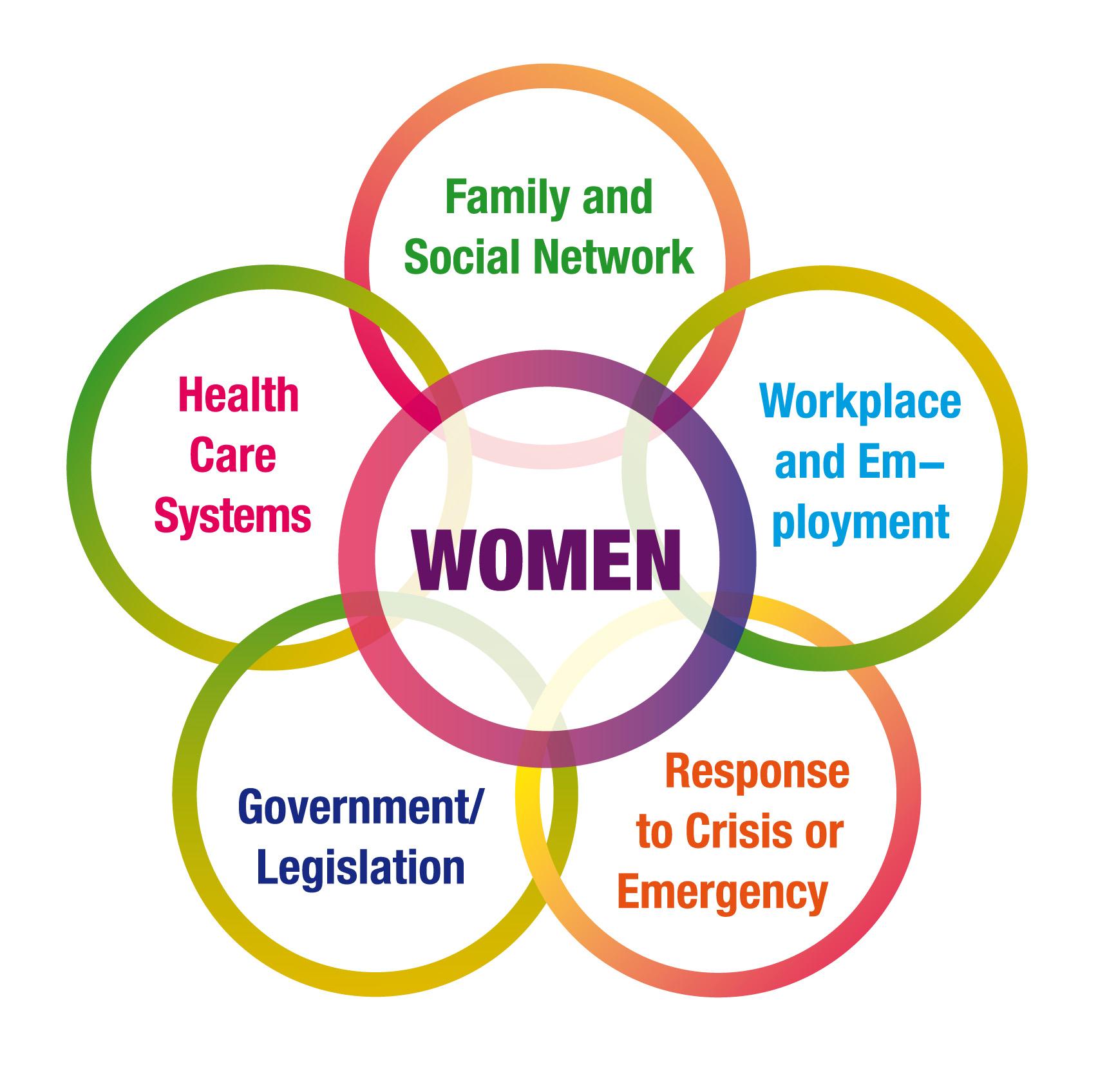Breastfeeding Support: Close to Mothers
Breastfeeding support is this year's pivotal concern. And the breastfeeding support circles illustrate the potential influences on a mother's decision to breastfeed and to have a positive breastfeeding experience. Previously featured during World Breastfeeding Week 2008, the Circles of Support continue to be a vital foundation for mothers to breastfeed their babies.
The Circles of Support are:
- Family and Social Network
- Healthcare Systems
- Workplace and Employment
- Government/ Legislation
- Response to Crisis or Emergency
- Women

Family and Social Network:
Husbands/partners/fathers, family and friends compose the mother's immediate and continuous support network. Social support includes community support - at the market place, within a religious context, at a neighbourhood park, etc. Support during pregnancy reduces stress. Support during labour and birth empowers the mother. Societal support increases the mother's confidence in her ability to breastfeed beyond the early weeks and months.
Healthcare Systems:
This includes a multitude of opportunities to support breast feeding. These opportunities range from mother friendly prenatal care and supportive labor and delivery services to postpartum and postnatal care that facilitates bonding and optimal infant feeding. Health workers trained in counseling skills support mothers before and after birth.
Workplace and Employment:
Employed women face challenges and need support to succeed at working and breastfeeding. The opportunities for mother support are as varied as the work women do, but usually involve facilitating mother-baby contact or expression and storage of breast milk.
Government/ Legislation:
Women who plan to breastfeed or who are already breastfeeding benefit from the support of international documents, protections for optimal infant feeding, plus active and well funded national commissions. Legislation that combats aggressive marketing of breastmilk substitutes and enacts paid maternity leave also benefits breastfeeding women.
Response to Crisis or Emergency:
This circle of support represents the need for support IF a woman finds herself in an unexpected and / or serious situation, with little control. Situations that require special planning and support are: natural disasters, refugee camps, divorce proceedings, critical illness of mother or baby, or living in an area of high HIV/AIDS prevalence with no support for breastfeeding.
Women:
Women are in the center because the presence or absence of support impacts them directly. Women also have an important role in securing support and in providing it to others. Within the Global Initiative for Mother Support (GIMS) for Breastfeeding Statement (2007) we noted, 'Mothers are considered active participants in the support dynamic, being both providers and recipients of information and support'.
Up to what age can a baby stay well nourished by just being breastfed?
Infants should be exclusively breastfed – i.e. receive only breast milk – for the first six months of life to achieve optimal growth, development and health. "Exclusive breastfeeding" is defined as giving no other food or drink – not even water – except breast milk. It does, however, allow the infant to receive oral rehydration salts (ORS), drops and syrups (vitamins, minerals and medicines). Breast milk is the ideal food for the healthy growth and development of infants; breastfeeding is also an integral part of the reproductive process with important implications for the health of mothers.
WHO recommends that infants start receiving complementary foods at six months (180 days) of age in addition to breast milk. Foods should be adequate, meaning that they provide sufficient energy, protein and micronutrients to meet a growing child's nutritional needs. Foods should be prepared and given in a safe manner to minimize the risk of contamination. Feeding young infants requires active care and stimulation to encourage the child to eat.
The transition from exclusive breastfeeding to full use of family foods is a very vulnerable period. It is the time when many infants become malnourished, contributing significantly to the high prevalence of malnutrition in children under five years of age worldwide. It is essential therefore that infants receive appropriate, adequate and safe complementary foods to ensure the right transition from the breastfeeding period to the full use of family foods.
Amounts of foods to offer:
Amount at each meal Frequency
Texture Age
Start with 2–3 tablespoonfuls per feed, increasing gradually to ½ of a 250 ml cup. 2–3 meals per day, plus frequent breastfeeds.
Depending on the child's appetite, 1–2 snacks may be offered.
Start with thick porridge, well mashed foods.
Continue with mashed family foods.
6–8 month
½ of a 250 ml cup/bowl. 3–4 meals per day, plus breastfeeds.
Depending on the child's appetite, 1–2 snacks may be offered. Finely chopped or mashed foods, and foods that baby can pick up. 9–11 months
¾ to full 250 ml cup/bowl. 3–4 meals per day, plus breastfeeds.
Depending on the child's appetite, 1–2 snacks may be offered.
Family foods, chopped or mashed if necessary. 12–23 months
Note: If baby is not breastfed, give in addition: 1–2 cups of milk per day, and 1–2 extra meals per day.
| 6–8 months |
Start with thick porridge, well mashed foods
Continue with mashed family foods |
2–3 meals per day, plus frequent breastfeeds
Depending on the child's appetite, 1–2 snacks may be offered |
Start with 2–3 tablespoonfuls per feed, increasing gradually to ½ of a 250 ml cup |
9–11 months |
Finely chopped or mashed foods, and foods that baby can pick up |
3–4 meals per day, plus breastfeeds
Depending on the child's appetite, 1–2 snacks may be offered |
½ of a 250 ml cup/bowl |
12–23 months
|
Family foods, chopped or mashed if necessary |
3–4 meals per day, plus breastfeeds
Depending on the child's appetite, 1–2 snacks may be offered |
¾ to full 250 ml cup/bowl |
Note: If baby is not breastfed, give in addition: 1–2 cups of milk per day, and 1–2 extra meals per day.